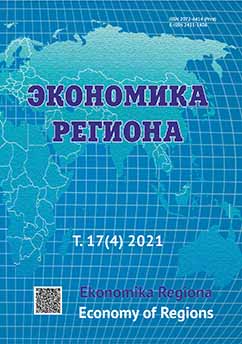Устойчивость бюджетных доходов субъектов РФ и ее источники
Sustainability of Regional Budget Revenues and Its Sources
Author(s): Marina Yuryevna MalkinaSubject(s): Economy, Geography, Regional studies
Published by: Институт экономики Уральского отделения Российской академии наук
Keywords: Russian regions; sub-federal budgets; budget sustainability; real budget revenues per capita; tax revenues; non-tax revenues; gratuitous receipts; transfers; sub-federal budget revenue risk
Summary/Abstract: Sustainability of regional budget revenues and the overall regional economic sustainability are mutually influential. The present research contributes to the identification of internal sources of budget sustainability observed in the constituent entities of the Russian Federation. The study proposed and tested an approach to distinguishing between steady growth rates of real revenues per capita of sub-federal budgets and their volatility using linear time regressions. The variance of the residuals is considered as an absolute measure of risk (instability), while the ratio of the residual standard deviation to the average income value is seen as a relative measure. Based on the construction of partial time regressions and use of variance rules, indicators of budget sustainability were decomposed according to income sources. The proposed methodology was applied to assess average real budget revenues per capita and determine steady growth rates, absolute and relative risks in 83 entities of the Russian Federation in 2010–2017. Budget systems of certain mining and border regions are characterised by low stability, while some highly diversified regional economies of the European Russia proved to be the most stable. In the group of tax revenues, the profit tax is the relative amplifier of budget risk, and the personal income tax is the risk damper. In the group of non-tax revenues, income from the sale of assets is the instability enhancer, and income from the use of property is seen as the damper. Among gratuitous receipts, subventions, followed by grants, play a stabilising role, while subsidies act as destabilisers. The dissimilarity between budget risk structures of the regional average and country portfolio, the most notable in the group of transfers, was explained by different time correlation of budget revenues in Russian regions. The proposed approaches can be improved by using non-linear regressions and appropriate methods for decomposing indicators of budget sustainability according to sources. The research findings can be used for the management of sustainable regional development and intergovernmental relations in the Russian Federation.
Journal: Экономика региона
- Issue Year: 17/2021
- Issue No: 4
- Page Range: 1376-1389
- Page Count: 14
- Language: Russian

